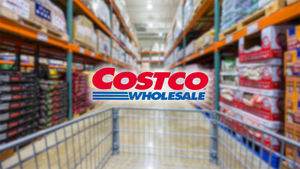Sanderson Farms, Inc. (NASDAQ: SAFM) today provided an update on the Company’s operations and the impact of Hurricane Ida on its locations in Louisiana and Mississippi.
“We are thankful that we have not had any reports of injuries to any of our employees as a result of this devastating hurricane,” said Joe F. Sanderson, Jr., chairman and chief executive officer of Sanderson Farms, Inc. “We have experience managing through catastrophic weather events, and we were prepared to respond to Hurricane Ida and do all we can to protect our assets. Our top priority has been and will continue to be the safety of our employees, contractors and independent contract producers, and the health and wellbeing of the animals under our care.
“All of our facilities have power except for Hammond, Louisiana, and the feed mill and hatchery in McComb, Mississippi. Those facilities will operate on generator power until utilities are restored. Fortunately, none of our facilities have experienced any significant structural damage. Our operations in Hammond, as well as all our Mississippi locations, will not operate today, but we expect to resume production in Laurel, Collins, Hazlehurst and Jackson, Mississippi, tomorrow. The widespread power outages are creating challenges for our employees in Hammond and McComb, but we hope these locations will be back in operation later this week. We also expect to operate over the holiday weekend, including Monday, to catch up on lost production.
“We are pleased to report no significant bird loss and currently have 650 broiler houses, 17 pullet houses and 48 breeder houses operating on generator power. In anticipation of the storm and resulting power outages, we topped off feed bins and fuel tanks, tested generators and prepared farms before the storm hit to ensure our growers have adequate supplies of feed and fuel to care for flocks until power is restored.
“Hurricane Ida was a storm of historic proportions, and we are deeply saddened by the extreme devastation and losses that have occurred. We are grateful for the support from local authorities and the heroic work of first responders who are dealing with the aftermath of the storm as conditions allow. We will continue to help those displaced by the storm, including providing ice and food to the affected areas when it is safe to do so,” added Sanderson.
Sanderson Farms, Inc. is engaged in the production, processing, marketing and distribution of fresh, frozen and minimally prepared chicken. Its shares trade on the NASDAQ Global Select Market under the symbol SAFM.
This press release includes forward-looking statements within the meaning of the “safe harbor” provisions of Section 27A of the Securities Act of 1933, as amended, and Section 21E of the Securities Exchange Act of 1934, as amended. Forward-looking statements are based on a number of assumptions about future events and are subject to various risks, uncertainties and other factors that may cause actual results to differ materially from the views, beliefs, projections and estimates expressed in such statements. These risks, uncertainties and other factors include, but are not limited to, those discussed under “Risk Factors” in the Company’s Annual Report on Form 10-K for the fiscal year ended October 31, 2020, and Quarterly Report on Form 10-Q for the quarter ended July 31, 2021, and the following:
(1) |
|
Changes in the market price for the Company’s finished products and feed grains, both of which may fluctuate substantially and exhibit cyclical characteristics typically associated with commodity markets. |
(2) |
|
Changes in economic and business conditions, monetary and fiscal policies or the amount of growth, stagnation or recession in the global or U.S. economies, any of which may affect the value of inventories, the collectability of accounts receivable or the financial integrity of customers, and the ability of the end user or consumer to afford protein. |
(3) |
|
Changes in the political or economic climate, trade policies, laws and regulations or the domestic poultry industry of countries to which the Company or other companies in the poultry industry ship product, and other changes that might limit the Company’s or the industry’s access to foreign markets. |
(4) |
|
Changes in laws, regulations, and other activities in government agencies and similar organizations applicable to the Company and the poultry industry and changes in laws, regulations and other activities in government agencies and similar organizations related to food safety. |
(5) |
|
Various inventory risks due to changes in market conditions, including, but not limited to, the risk that net realizable values of live and processed poultry inventories might be lower than the cost of such inventories, requiring a downward adjustment to record the value of such inventories at the lower of cost or net realizable value as required by generally accepted accounting principles. |
(6) |
|
Changes in and effects of competition, which is significant in all markets in which the Company competes, and the effectiveness of marketing and advertising programs. The Company competes with regional and national firms, some of which have greater financial and marketing resources than the Company. |
(7) |
|
Changes in accounting policies and practices adopted voluntarily by the Company or required to be adopted by accounting principles generally accepted in the United States. |
(8) |
|
Disease outbreaks affecting the production, performance and/or marketability of the Company’s poultry products, or the contamination of its products. |
(9) |
|
Changes in the availability and cost of labor and growers. |
(10) |
|
The loss of any of the Company’s major customers. |
(11) |
|
Inclement weather that could hurt Company flocks or otherwise adversely affect the Company’s operations, or changes in global weather patterns that could affect the supply and price of feed grains. |
(12) |
|
Failure to respond to changing consumer preferences and negative or competitive media campaigns. |
(13) |
|
Failure to successfully and efficiently start up and run a new plant or integrate any business the Company might acquire. |
(14) |
|
Unfavorable results from currently pending litigation and proceedings or litigation and proceedings that could arise in the future. |
(15) |
|
Changes resulting from the COVID-19 pandemic, which could exacerbate any of the risks described above, and could include: high absentee rates that have prevented and may continue to prevent the Company from running some of its facilities at full capacity, or could in the future cause facility closures; an inability of contract poultry producers to manage their flocks; supply chain disruptions for feed grains; further changes in customer orders due to shifting consumer patterns; disruptions in logistics and the distribution chain for the Company’s products; liquidity challenges; and a continued or worsening decline in global commercial activity, among other unfavorable conditions. |
(16) |
|
Risks relating to the Company’s recently-announced entry into a definitive agreement to be acquired by a joint venture between Cargill, Incorporated (“Cargill”) and Continental Grain Company (“CGC”), including: the timing, receipt and terms and conditions of any required governmental or regulatory approvals of the proposed transaction and the related transactions involving affiliates of Cargill and CGC that could reduce the anticipated benefits of or cause the parties to abandon the proposed transaction; risks related to the satisfaction of the conditions to closing the proposed transaction (including the failure to obtain necessary regulatory approvals or the approval of the Company's stockholders), and the related transactions involving affiliates of Cargill and CGC, in the anticipated timeframe or at all; the risk that any announcements relating to the proposed transaction could have adverse effects on the market price of the Company's common stock; disruption from the proposed transaction making it more difficult to maintain business and operational relationships, including retaining and hiring key personnel and maintaining relationships with the Company’s customers, vendors and others with whom it does business; the occurrence of any event, change or other circumstances that could give rise to the termination of the merger agreement entered into pursuant to the proposed transaction or of the transactions involving affiliates of Cargill and CGC; risks related to disruption of management's attention from the Company's ongoing business operations due to the proposed transaction; significant transaction costs; and the risk of litigation and/or regulatory actions related to the proposed transaction or unfavorable results from currently pending litigation and proceedings or litigation and proceedings that could arise in the future. |
Readers are cautioned not to place undue reliance on forward-looking statements made by or on behalf of Sanderson Farms. Each such statement speaks only as of the day it was made. The Company undertakes no obligation to update or to revise any forward-looking statements. The factors described above cannot be controlled by the Company. When used in this press release, the words “believes,” “estimates,” “plans,” “expects,” “should,” “could,” “outlook,” and “anticipates” and similar expressions as they relate to the Company or its management are intended to identify forward‑looking statements. Examples of forward-looking statements include statements of the Company’s belief about future operations, operating conditions, and condition of Company assets.
View source version on businesswire.com: https://www.businesswire.com/news/home/20210830005539/en/
Contacts
Mike Cockrell
Treasurer, Chief Financial Officer & Chief Legal Officer
(601) 649-4030





